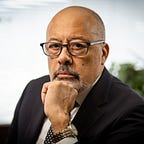The New ISO Standard 30415: Diversity and Inclusion
Bringing consistency and a quality approach to a change area that needs guidance!
A dedicated, determined and passionate group of diversity and inclusion professionals were the force that led to the development of a new global standard in diversity and inclusion. It becomes the first of its kind endorsed by the International Organization for Standardization (ISO).
ISO 30415: Diversity and Inclusion
The new standard elevates the work to a new level and provides suggested guidance to assist organizational leaders in evaluating practices at small, medium and large enterprises. It is adaptable to practices in non-profits, government agencies and operations around the world. It allows leaders within those organizations to examine their current effectiveness in diversity and inclusion, assess against governmental and compliance requirements in their countries, and to identify gaps that will need to be addressed using a systemic, evidence-based assessment if sustainable change is desired.
A lot of diversity work in recent years has been performative. Support for ERGs, donations to community events, outreach to diverse communities have been part of this tool kit of many practitioners. They wanted their organizations to look good, to be seen as having a good reputation in the community, and to mitigate any negative perspectives as a place for talented people of color and women to work. Yet such efforts produced marginal results. In the 21st century, window dressing is gone. Words and commitment matter but cannot be substituted for action. People are noticing what you say and what you do!
Why?
Many well-meaning organizations have written eloquently crafted commitment statements and pledged to do more to advance the work. Yet many have been reluctant to address the adaptive challenges that impact the effectiveness of building a more diverse, equitable and just organization. These organizations and their leaders want to be seen as committed but lacked the capacity, competence or will to drive sustainable change. Many leaders are fearful of stepping into the uncomfortable space of difference for fear they may appear stupid or ill-informed. My advice to leaders is to start to get comfortable with being uncomfortable!
Diversity, equity, justice, and belonging are too often empty slogans. The intent by many leaders is laudable but the impact of their actions is and continues to be marginal at best.
Sustainable change in DEI workplace practices and workforce behavior require changes in behavior, systems and policies, and attitudes of employees at all levels. It starts with effective governance. What is the board of directors inspecting in terms of diversity and inclusion efforts? How are senior leaders held accountable? What intentional and deliberate strategies are in place based on a careful review of the curent state? What are the desired outcomes of a more diverse and inclusive culture and workforce? What is the intentional framework for addressing the issues ( pillars, actions, measures, outputs, and accountabilities for results). What are leaders expecting and how are they inspecting progress and results. Leaders who are not addressing the obvious lack of diversity on their leadership team are setting themselves up for a ruthless interrogation by skilled and “woke” stakeholders. It calls into question the very nature of their personal leadership, commitment, and courage.
Diversity, equity and justice cannot just be willed by leadership, it must be driven by a carefully developed and supported systemic change effort. It is not about putting employees through the latest implicit bias training without a firm understanding of commitment and desired outcomes. DEI starts with leadership understanding this change work, how they need to refine their leadership behavior, how they must oversee the development of an enterprise-wide change framework and how they must set clear expectations for this as an organizational priority aligned with desired organizational outcomes and strategic priorities. Leaders must become the change and the role models they expect everyone else in their organizations to be.
Expectations are being set by a growing set of stakeholders — some inside the organization, some outside (regulators, community activists, supply chain partners, and government leaders). The pressure being brought by societal forces for leaders to be more empathetic and self aware is unrelenting. The expectation is your organizational and leadership efforts must move from simply performative window dressing, to substantive transformational change at the individual, team, systemic, structural, and societal levels. Stakeholders want to see evidence that you are serious. Words are not enough!
Tools and Social Media
Sophisticated tools and online forums have become more powerful and unforgiving for those who think that their organization can bury its head in the sand. Millenials are not buying worn-out slogans and defensive responses. Companies are being “outed” for their outmoded practices by sophisticated internet users and social justice warriors. They want immediate actions coupled with longer term plans that truly transform your organization. They want organizations that create level playing fields where capable and diverse talent can feel a sense of belonging and can trust that their leaders are truly serious about a more just organization and one that is supportive and inclusive of demographic change which is reflected its operations, supply chain and in its relationships and with the communities in which it operates.
From Performative to Transformative Change
Transformative approaches to diversity and inclusion efforts are no longer optional, they are foundational to organizations who hope to stay relevant, admired, and competive going forward.
ISO 30425 presents one tool to help you assess your current state and calibrate the calculus of change needed in your organization for a sustainable future.
For More information:
ISO: https://www.iso.org/news/ref2665.html
Henderworks Congratulations: https://www.youtube.com/watch?v=oeNiL0dfrcE&t=7s
What is an ISO Standard? https://www.youtube.com/watch?v=AYBVTeqKahk
Information about the Diversity and Inclusion standard can be found here: https://www.iso.org/obp/ui/#iso:std:iso:30415:ed-1:v1:en
Effenus Henderson
